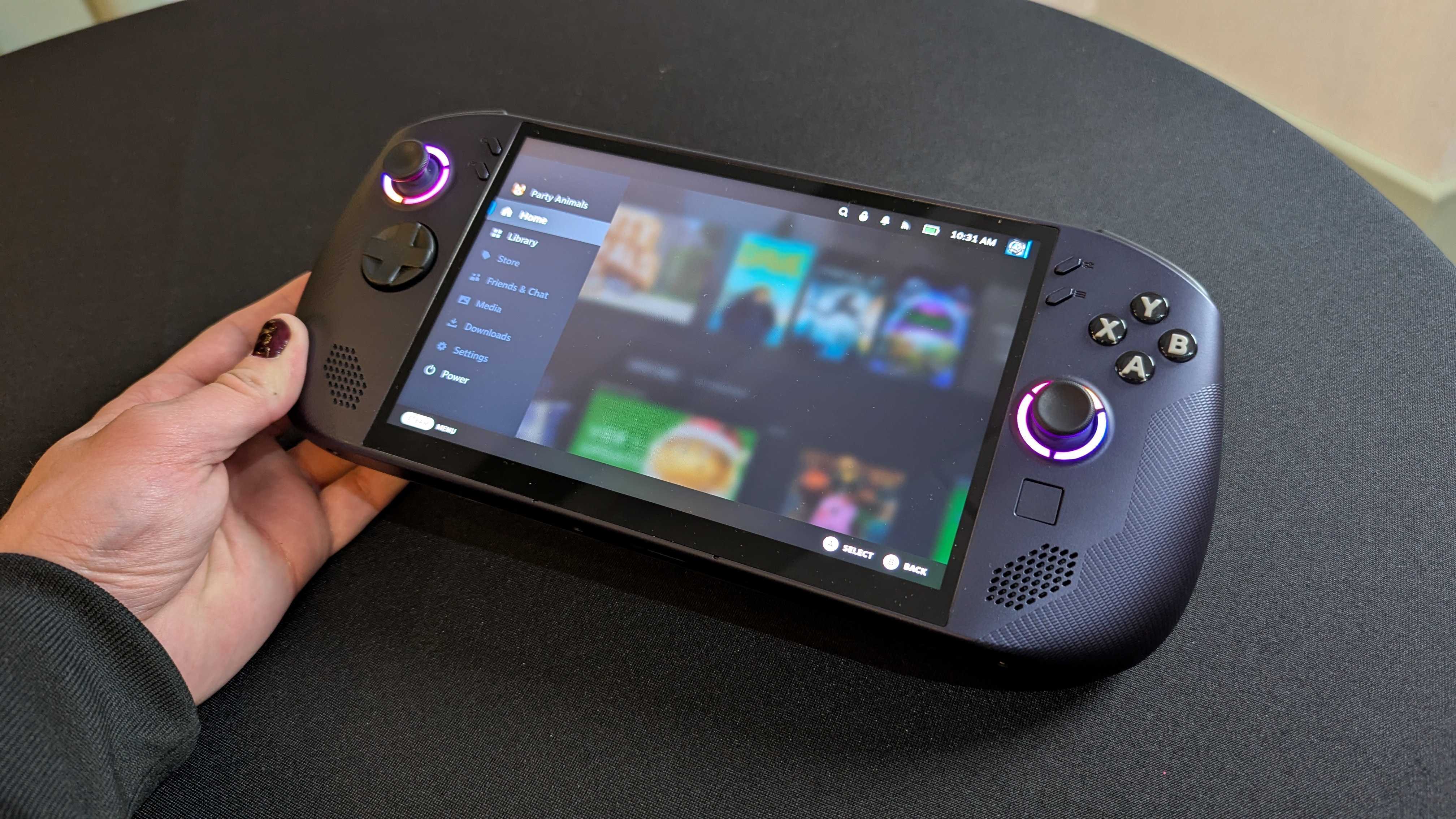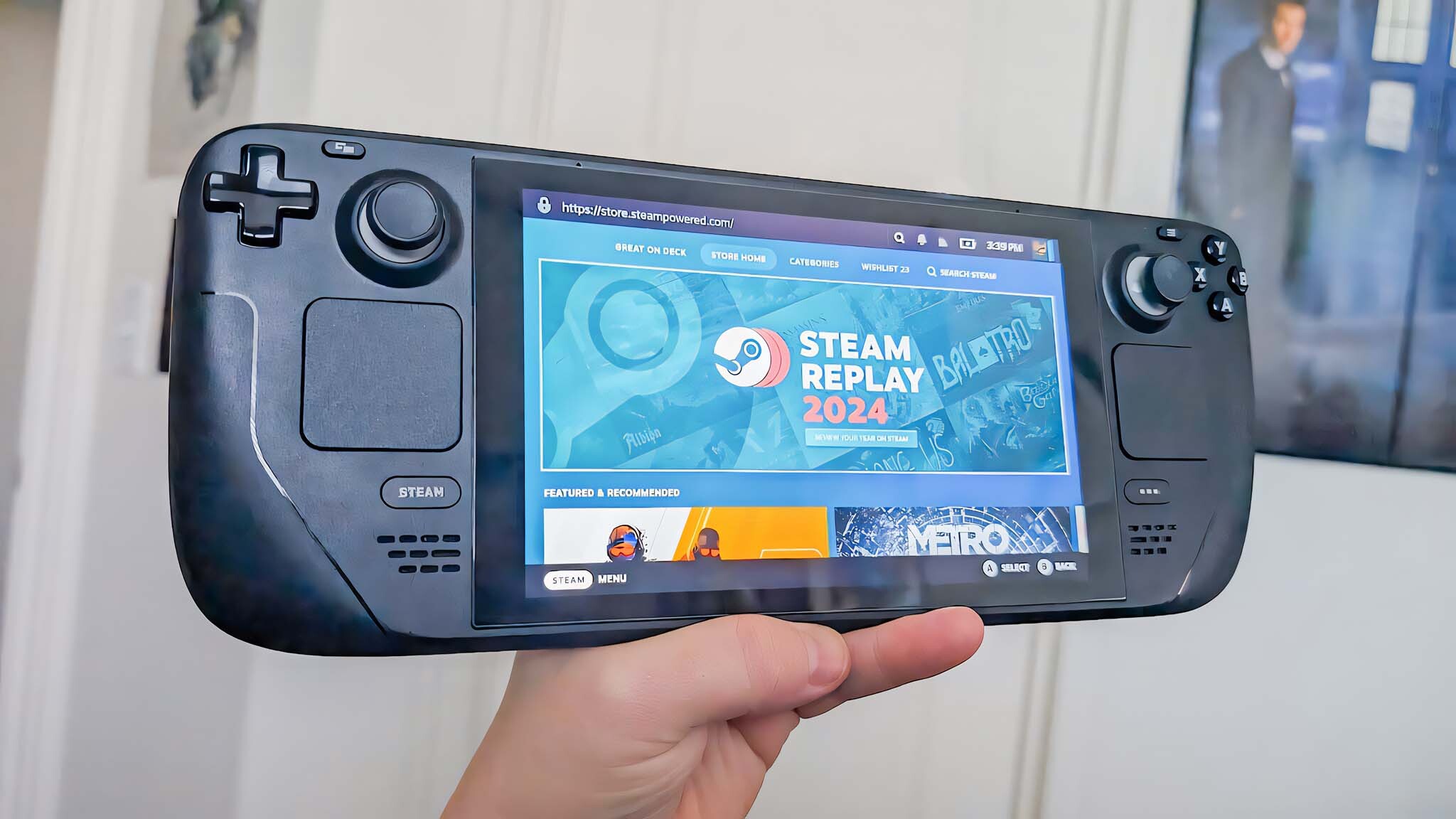One of the most exciting new device categories is that of the PC gaming handheld. Companies like Valve, Lenovo, ASUS, GPD, and many others have begun mainstreaming the tech, inspired by the monolithic efforts of Nintendo with its Switch and other pioneering gaming handhelds. In 2025, we have a vast plethora of options to choose from, and later this year, we’ll have even more.
Announced at CES 2025, Valve revealed that Steam OS, developed for the Steam Deck, will go fully device agnostic. The Lenovo Legion Go S will be the first third-party Steam Deck, offering a non-Windows variant of their PC gaming handheld line up for the first time. To that end, Microsoft has doubtless started feeling the pressure, as Steam OS has shone a very bright spotlight on how difficult Windows is to use on devices like this. Maximum compatibility comes with maximum technical debt, and it seems Xbox’s VP of Next Gen Jason Ronald agrees.
In comments to The Verge at a panel which featured Valve and Lenovo both, Ronald remained bullish on what Microsoft can bring to the market here. Ronald described how Microsoft intends to bring the gaming-focused usability of the Xbox operating system directly to Windows.
“I would say it’s bringing the best of Xbox and Windows together, because we have spent the last 20 years building a world-class operating system, but it’s really locked to the console. What we’re doing is we’re really focused on how do we bring those experiences for both players and developers to the broader Windows ecosystem. […] I think we’ll have a lot more to share later this year.”
Indeed, for anyone who has used a device like the ASUS ROG Ally or Lenovo Legion Go, it’s undeniable how much of a mess it is compared to Valve’s Steam Deck or the Nintendo Switch. Windows absolutely wasn’t anywhere near designed for this type of system, and to really get the most out of Windows-based PC gaming handhelds, you need to have a fairly decent understanding of PC gaming in general. The Steam Deck by comparison is largely plug and play, fully designed to be navigable with joysticks, with trackpads baked in when games expect a cursor present. Furthermore, the Steam Deck also doesn’t prevent users from tinkering either, unlike traditional console platforms like the Xbox or PlayStation, which are fully locked down. I was quite easily able to install non-Steam games on my Steam Deck back before I upgraded to a Lenovo Legion Go.
Microsoft has been gradually boosting the experience on Windows-oriented PC gaming handhelds, with compact mode for the Xbox Game Bar for example. To that end, Ronald described how Microsoft’s goal is to make Windows more adaptive to different device types, leveraging the Xbox interfacing.
“I think, at the end of the day, our goal is to make Windows great for gaming on any device. The reality is the Xbox operating system is built on top of Windows. So there’s a lot of infrastructure that we built in the console space that we can bring to the PC space and really deliver that premium gaming experience on any device. […] There’s just certain things in Windows that were not designed for if you don’t have a keyboard and mouse, like thumbstick support or joypads and stuff like that.”
Steam OS is finally bringing Windows some serious competition in the consumer space
Windows has enjoyed a blanket monopoly for decades, sitting as the top choice for desktop PC operating systems for almost every consumer-oriented scenario imaginable. I would argue that its dominance there has also made it stagnant, without serious competitors in the space pushing Windows to offer a better experience.
Back in 2015, Microsoft CEO Satya Nadella said he wanted people to go from using Windows, to loving Windows. In 2025, that dream couldn’t be further from reality. You only need to glance across celebratory comments on socials or PC gaming articles to see how ready gamers are for a genuine alternative to Windows, after years of “enshittification,” with baked-in ads, bloatware, alongside a (at least perceived) lackadaisical approach to privacy. To be fair to Microsoft, though, Windows isn’t exactly subsidized to the same degree operating systems like Android, iOS, or Steam OS are, lacking a “default” digital storefront to generate on-going revenue. Microsoft recently remarked that Google makes more money from Windows than Microsoft itself does, owing to Windows’ historical open nature. The license sale is the entire business model for Windows — which is problematic when it comes to making devices more affordable at the point of sale too, since OEMs pass the license fee onto consumers.
Either way, I would argue that gunning for a developer-first, consumer-first approach would be the best way to begin to repair things, in an era where Windows feels less of a focus for Microsoft than any time in my lifetime. An Xbox OS for gaming handhelds would be a dream, subsidized with an Xbox Store front and center. The Xbox app for Windows needs to be a far more open platform for game devs, with vastly streamlined certification processes, and reduced requirements for publishing. The lack of truly organic publishing growth on the Microsoft Store is extremely telling, with developers liable to only support Xbox on PC if they’re part of a publishing deal under Xbox Game Pass.
The hurdles to get Windows to where it needs to be for gaming are numerous and multifaceted, both externally and internally. Different departments within Microsoft are responsible for different parts of the Windows experience, and corporate sets the rules and policies that are stifling the platform’s organic growth. Navigating Microsoft’s corporate infrastructure to improve Windows for gamers may even prove harder than developing the technology itself.
At the end of the day, there’s reason why gamers and developers prefer Steam. It’s absolutely crucial for Windows’ future that Microsoft begins to listen to them — the rise of Steam OS may give them no choice. For sure, Microsoft still has the ability to take people from “using Windows, to loving Windows,” if it is willing.






